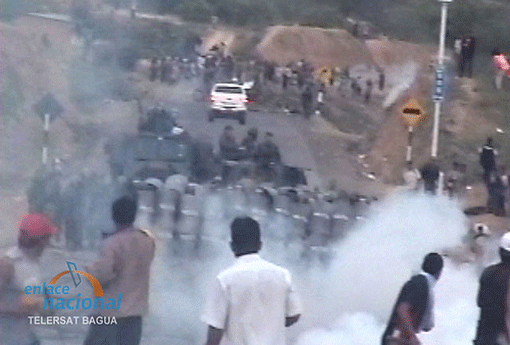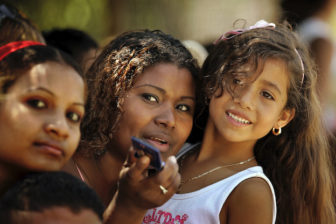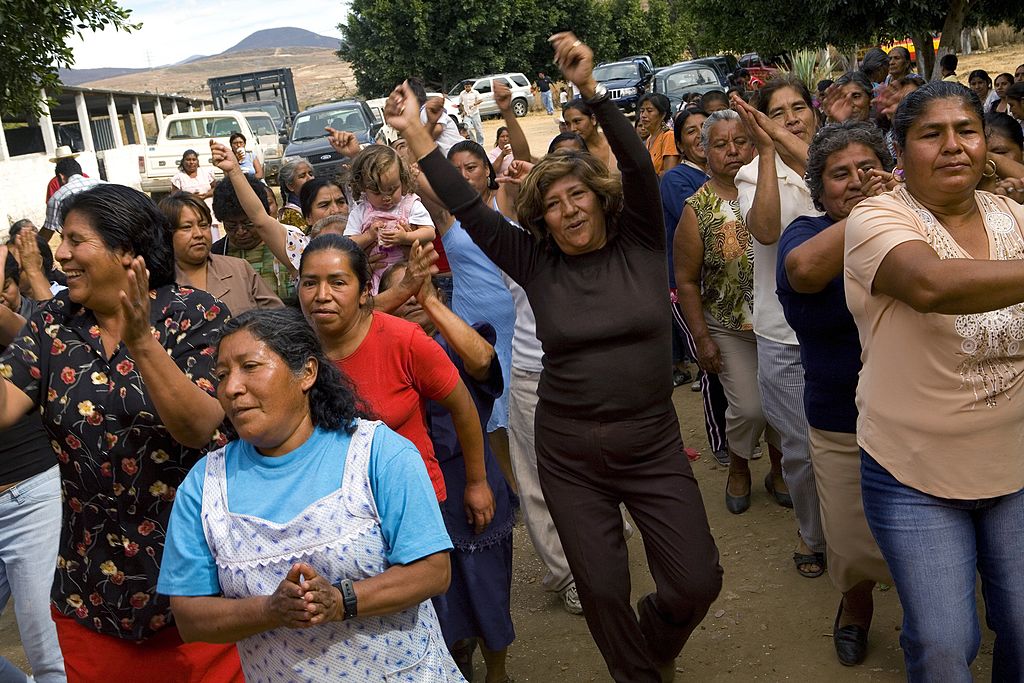June 12, 2009
Few regions in the world are as richly endowed as the Peruvian Amazon. Beyond housing around 10 percent of the world’s biodiversity, it is rich in mineral, hydrocarbon and forestry resources, and its rivers are a coveted source of freshwater, food and energy. But the Amazon’s riches have also set the stage for a bitter conflict between the region’s indigenous peoples and
At the center of the conflict is a set of legislative decrees issued in early 2008 by the executive, bypassing the normal congressional discussion and scrutiny process. President Alan García’s extraordinary legislative powers were justified under the guise of ensuring quick implementation of the Peru-U.S. free-trade agreement. However, the 101 decrees issued go well beyond facilitating U.S.-Peru trade relations. Using a popular free-trade arrangement—60 percent of Lima residents see it as positive for Peruvian development according to a 2008 report by the International Work Group for Indigenous Affairs—as a springboard, the decrees implement a much wider agenda aimed at opening a vast area of the Peruvian Amazon (around 60 percent of the country’s territory) to development, making it easier for private investors to settle and acquire lands. The decrees (994and 020-2008-AG) in effect create a special fast-track regime for awarding title to “idle and unproductive lands” with agricultural potential to private developers. But, in fact, most of the land under dispute is traditionally held by indigenous groups.
In
The dispute between the administration of President Alan García and the indigenous peoples was set in motion by the government’s failure to consult the affected peoples prior to issuing the decrees, as required by law. Beyond the government’s procedural blunders, the substance of the dispute revolves around indigenous rights to land and resources, and the conditions under which Amazonian development may take place in the future. In addition to Decrees 994 and 020-2008-AG, the existing definition of “idle and unproductive lands”—legally state-owned—is expanded in Decree 1064, further eroding the ability of indigenous peoples to maintain control of traditional lands and resources. It also eliminates the requirement that extractive industry companies must gain informed consent from local communities before entering their territories. Moreover, Decree 1090, the new Forestry Law, removes deforested areas from the inalienable patrimony of the state, enabling their sale to private parties. Already, illegal deforestation to make way for the sale of lands in indigenous territories has been reported. To cap things off, the titling of lands with agricultural potential is declared to be in the national interest (Decree 1089, art 1), taking priority over indigenous titling.
Legislative involvement is increasing as the situation has escalated. Following the initial negative indigenous reaction to the decrees, in December 2008, a multi-partisan commission convened to look into the dispute issued a report that found all the decrees to be illegal. The government has obstinately resisted their derogation and the conflict has escalated to unprecedented levels, including the declaration of a state of emergency in mid-May that suspends individual rights and guarantees in certain parts of the country. Five days after the June 5 confrontation in Bagua, and under intense public pressure, the legislature, which had called for dialogue instead of intervening directly in the conflict, narrowly approved (57 to 47 votes) Law 29376—a law that suspends the application of Decrees 1064 and 1090 (the Forestry Law).
What started off as an attempt to attract investment has backfired. Oil and gas companies, already active in the area and an important source of revenue for
Just two years earlier (June 2007) the government created a Social Impact Management Office (OGGS) to promote harmonious relations between extractive companies and civil society, including indigenous communities. The OGGS has prioritized conflict prevention over conflict management by pushing for increased participation and early community involvement in impact and benefit management. It launched a series of formal tri-party (government, civil society and industry) roundtables to seek consensus on development-related issues and is working on developing best practices in corporate social responsibility and on fine tuning community consultation regulations. Changing the sector’s institutional culture from one where any development is better than no development to one that emphasizes social and environmental sustainability is not easy and often leads to confrontation between OGGS and other oil and gas agencies, such as the private but state-owned and run Perupetro. But its work over the last couple of years has been undercut by García’s aggressive and unilateral approach to development promotion in the Amazon.
The current tension lays bare the dysfunctional workings of the Peruvian government. One of the objectives behind opening the land to private agri-businesses was to promote large-scale farming of bioenergy crops as part of a National Bioenergy Plan that emphasizes development of available land for biofuel production. But normal day-to-day operations of existing oil and gas producers have suffered, and the future development of the oil and gas industry is now in the balance. Together with mining, oil and gas is again being blamed for everything that goes wrong in the Amazon. It is true that the industry does not have a squeaky clean environmental and social record. But an important effort was being made by all sides, particularly in the area of increased dialogue, to correct mistakes and lay the groundwork for better impact management and benefit distribution.
Now, with most of the gains of the earlier dialogue lost, future Amazon investment is in doubt. A robust economic sector was sacrificed for the benefit of agri-business development including, most notably, biofuel development—an industry whose viability and advantages are questionable at best. As a result, the odds against any attempts by new industries to settle in the region have increased significantly. In what may be a precursor of future developments, a Brazilian consortium looking at hydroelectricity development on the
After a short honeymoon where
The executive is sending out mixed signals, opening the door for further tensions. Instead, the best way forward is through good-faith dialogue and timely consultation—an area where MINEM and the Ombudsman Office should reassert their role for the benefit of the indigenous people and Peruvian development.







